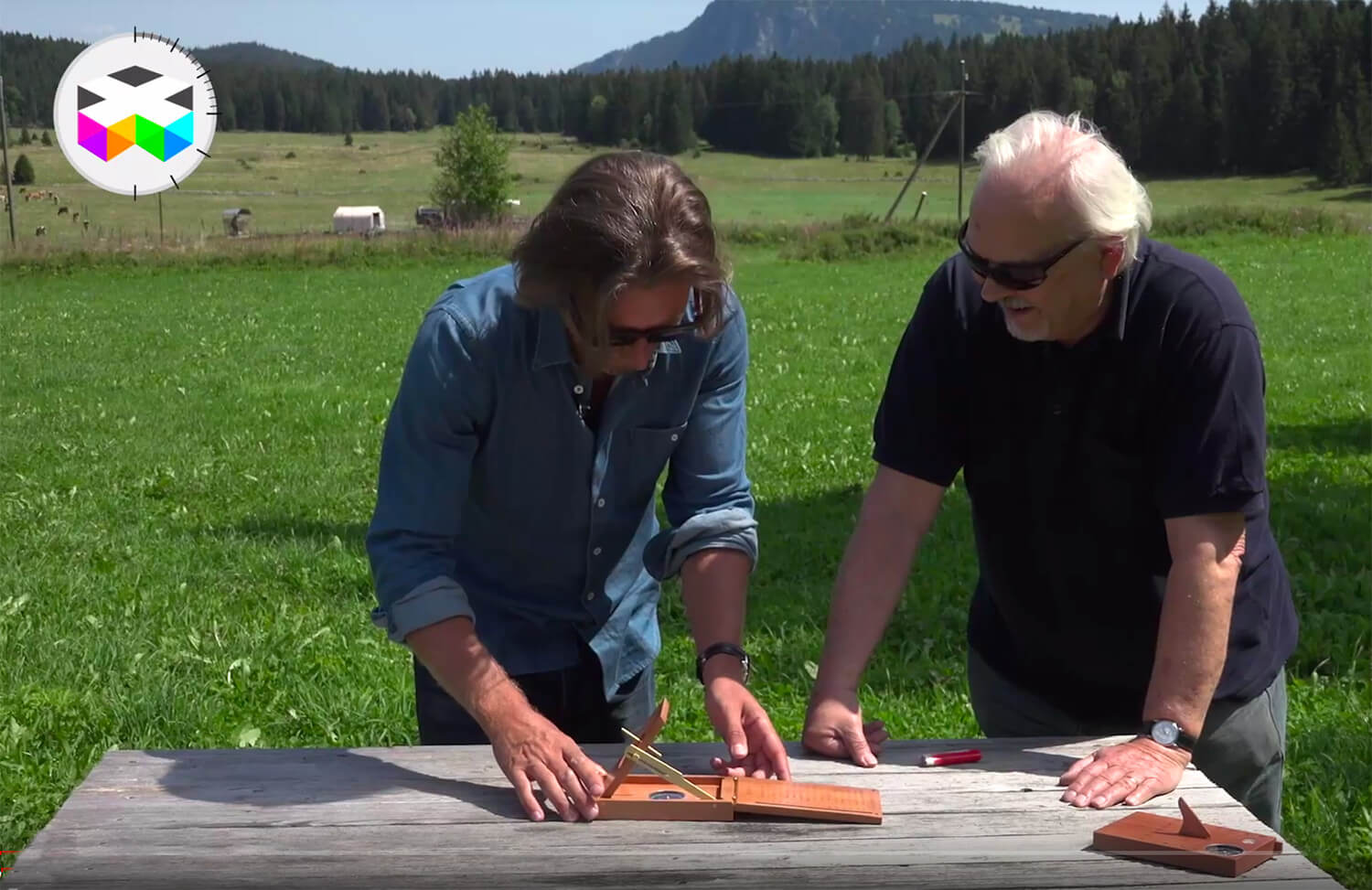Philippe Dufour Explains The Difference Between The (Civil) Time You See On Your Watch And The True Solar Time (Video)
All is never really as it seems on the spinning globe we call earth. We don’t feel the revolutions that the earth makes around its axis (1,670 km/h), nor do we sense the speed at which the earth hurtles through space on its annual course around the sun (approximately 108,000 km/h).
If we did feel these things, we might have more of an idea of how small humankind is in relation to the rest of the universe. So perhaps, for our egos at least, it’s a good thing that the motion of our blue planet is not tangible.
The passage of time is subject to a similar phenomenon: we do not feel time passing, nor does our body actually count hours or keep track of how long they are.
That job is left to timekeepers.

The Watches TV founder Marc André Deschoux (left) with Philippe Dufour
To keep track of time, the gears of clocks and watches evenly divide the day into 24 segments of 60 minutes, which are made up of 60 seconds each. This is known as mean solar time, and it is not equal to the true (or apparent) solar time that a sundial would show. However, our clocks and watches are not set to either of these two solar times but usually to an offset of Coordinated Universal Time (UTC).
Solar time is measured by the position of the sun and can run up to sixteen minutes ahead of and fourteen minutes behind the mean solar time that modern timekeepers display. Four times a year (one of those being December 25 and another being my birthday) they coincide precisely. Some watches also display solar time with an equation of time indication.
Our friends at The Watches TV spent a day with Philippe Dufour to have a look at this phenomenon in a personal way.
Leave a Reply
Want to join the discussion?Feel free to contribute!



Very cool video! Congrats!